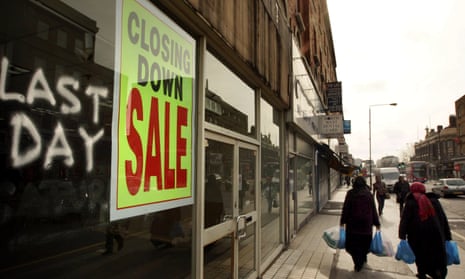One in 10 shops in UK town centres are lying empty, according to figures that underline the scale of the high street crisis.
The national town centre vacancy rate climbed to a four-year high of 10.2% last month, according to the British Retail Consortium (BRC) vacancies monitor. The vacancy rate has risen in each of the last four quarters to give the highest reading since April 2015, up from 9.9% three months ago.
The BRC’s chief executive, Helen Dickinson, said some struggling high streets were trapped in a downward spiral: “Empty shopfronts, particularly for larger stores, can deter shoppers from an area. This effect can be cyclical, with the long-term decline in footfall pushing up vacancy rates, particularly in poorer areas.”
The vacancy rate is likely to get worse before it improves, amid a sea change in shopping habits. A growing number of retailers, struggling as sales shift online, are scaling back their physical stores as high rents, coupled with rising business rates and payroll costs, make them unprofitable. The situation is made worse by dwindling shopper numbers, down 0.5% in April compared with a year ago, despite retailers benefiting from a late Easter.
Last week the fashion retailer Select collapsed into administration while Debenhams’ creditors backed a restructuring plan that will result in the closure of at least 22 of its department stores in January. Debenhams is using a company voluntary arrangement (CVA), which is a type of insolvency, to close loss-making stores and agree lower rents with landlords. Sir Philip Green’s Topshop empire is also working on the same kind of rescue restructure, which is expected to involve the closure of about 50 of the group’s 570 stores.
The scale of high-street decline is intensifying the campaign for the controversial business rate regime to be overhauled after the 2017 revaluation hit shopkeepers in parts of the country where property prices had soared. MPs on the Treasury select committee are investigating the impact of business rates , the commercial equivalent of council tax, and considering alternatives such as an online sales tax.
“For many retailers, business rates remain the single biggest tax imposed by government,” said Dickinson. “They are a levy on physical space that is paid in full regardless of whether a firm is in profit or in loss. If the government is serious about reversing the decline on our high streets, then reforming the broken business rates system would be an essential first step.”
